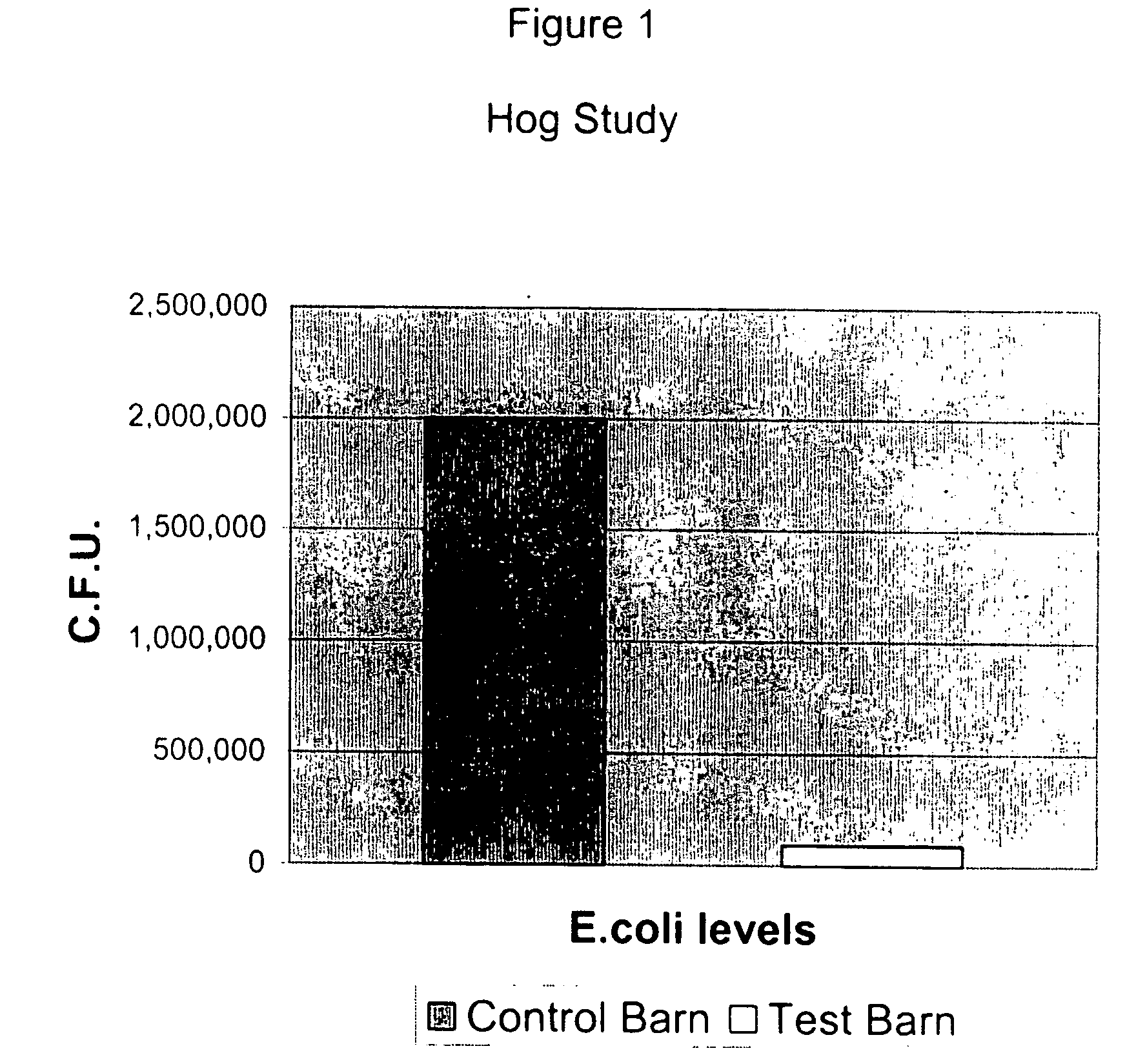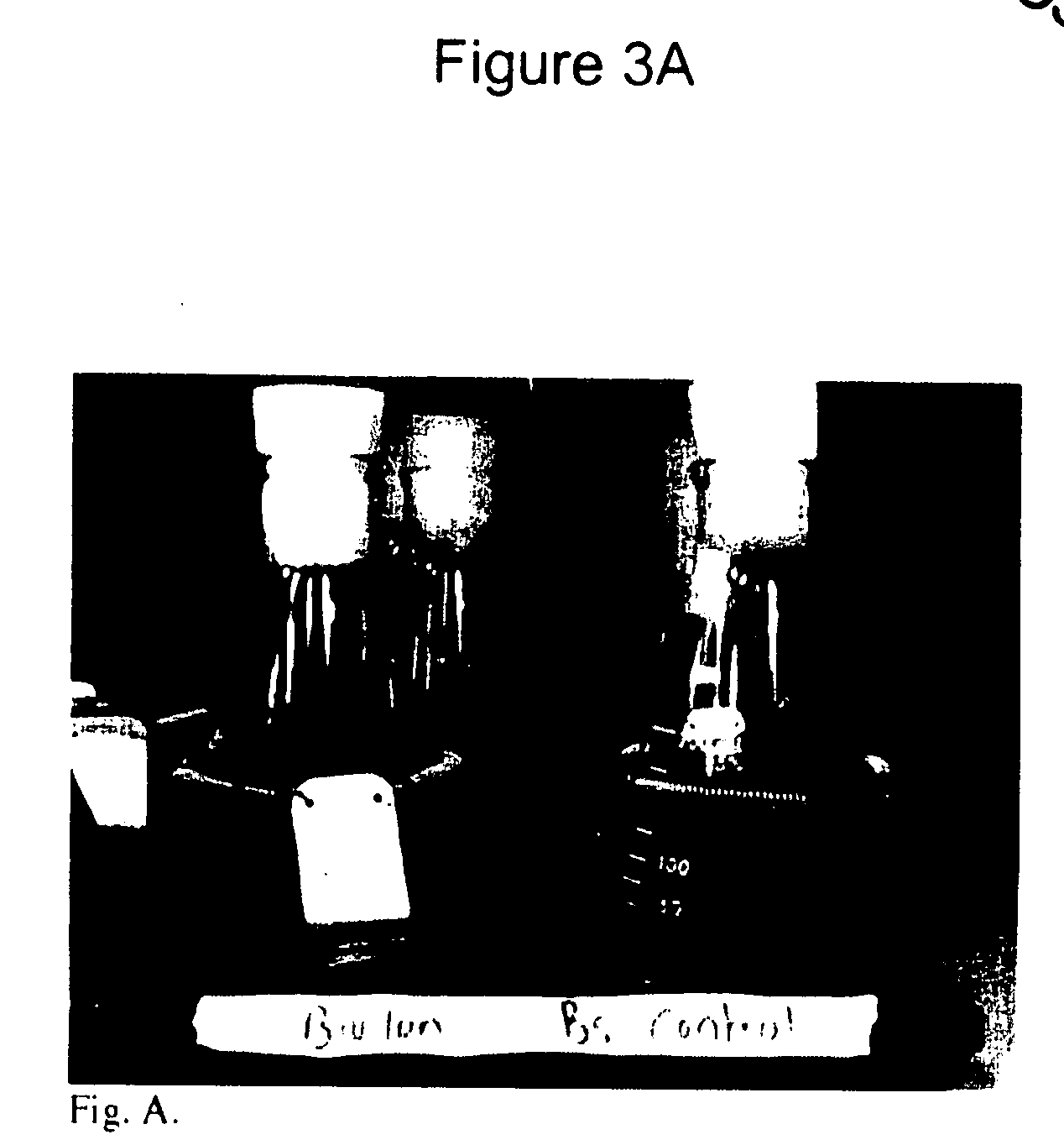Composition for the control of pathogenic microorganisms and spores
a technology of pathogenic bacteria and spores, applied in the direction of animal repellents, biocide, plant/algae/fungi/lichens ingredients, etc., can solve the problems of insufficient activity of agents, insufficient environmental protection, toxic or toxic, etc., to reduce the population of certain pathogenic bacteria, enhance the application of the effect of the effect of the effect of the application
- Summary
- Abstract
- Description
- Claims
- Application Information
AI Technical Summary
Benefits of technology
Problems solved by technology
Method used
Image
Examples
example 1
Effect of Antimicrobial Composition on Bacterial Growth in Liquid Culture
[0047] Bacterial cultures of Salmonella, E. coli and / or Listeria were mixed with chelated mineral ions alone or in combination with the barley extract for different periods of time and then subjected to microbial analysis. The bacteria analysis was done using standard methods. Spectrophotometry was used for optical density (absorbance) and a dilution plating method was used to count the colony forming units. Agar culture media were used according to the type of bacteria. For example, MacConkey Agar at pH 7.2 was used for E. coli. Green bile Agar at pH 7.0 was used for Salmonella and Palcam Agar media at pH 7.4 was used for Listeria. The cultures were incubated at 30° C. Bacterial sampling was done at various times post treatment. The results are shown in Tables 1 to 3. These results clearly illustrate that the compositions tested had potent antimicrobial effects. An enhanced antimicrobial effect is seen when t...
example 2
Treatment of Meat with Antimicrobial Composition
[0050] Beef and chicken samples were treated with the chelated mineral ions with or without barley extract. The initial bacterial population on the meats was adjusted with different inoculum sizes. Inoculums of 103, 105, and 106cells / ml were applied by submersion of the meat into the respective bacterial dilution for different times. Exposure was adjusted for 10, 30 and 60 minutes. It was found that 60 minutes exposure was the best to achieve the final desired bacterial population. After inoculation, the meats were transferred to the chelated mineral salts ion treatment with or without barley extract for different time periods (10, 30, 60 minutes). The meats were then subjected to bacterial analysis. For the analysis, the meats inoculated with bacteria were sampled after their respective treatments. Three different sites of the meat were independently swabbed with sterile cotton within 1 cm2 area of a sterile template. Each time, the ...
example 3
Field Trial in Hogs
[0053] A study was undertaken to determine whether treatment with the antimicrobial composition of the present invention could decrease the population of Salmonella, E. coli, Campylobacter, and Staphylococcus aureus in hog manure. Hogs were treated with the choline citrate chelated mineral ions in mixture with a probiotic containing a lactobacillus fermentation product and barley extract. Eighty hogs were randomly selected and split into forty gills and forty barrows. The hogs were approximately three months old and weighed approximately sixty pounds. The groups were further split into groups of twenty in two pens (20 gills and 20 barrows per pen). Both pens were fed the same with the exception that one pen had the addition of the probiotic which includes barley extract. One kilogram of the dried additive was added per metric ton of feed. Manure was analysed for the presence of Salmonella, E. coli, and Campylobacter using standard microbiological techniques such ...
PUM
| Property | Measurement | Unit |
|---|---|---|
| Composition | aaaaa | aaaaa |
| Ratio | aaaaa | aaaaa |
Abstract
Description
Claims
Application Information
 Login to View More
Login to View More - R&D
- Intellectual Property
- Life Sciences
- Materials
- Tech Scout
- Unparalleled Data Quality
- Higher Quality Content
- 60% Fewer Hallucinations
Browse by: Latest US Patents, China's latest patents, Technical Efficacy Thesaurus, Application Domain, Technology Topic, Popular Technical Reports.
© 2025 PatSnap. All rights reserved.Legal|Privacy policy|Modern Slavery Act Transparency Statement|Sitemap|About US| Contact US: help@patsnap.com



